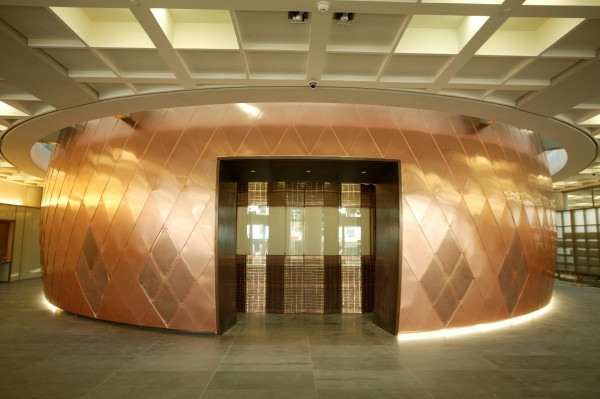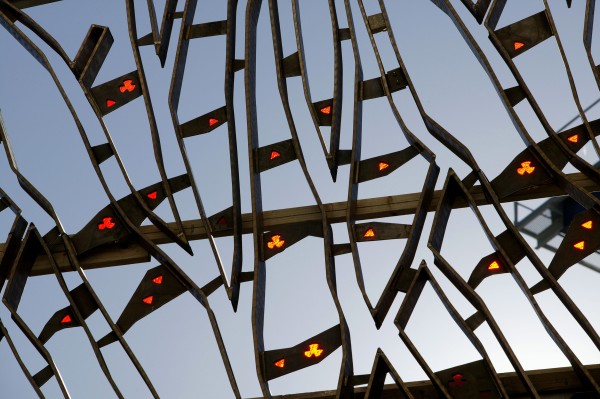20 years of the Supreme Court – Te Kōti Mana Nui

|

|
Contents
"An independent nation with its own history and traditions”: The establishment of the Supreme Court
What cases are heard in the Supreme Court?
Judges of the Supreme Court
What happens in a Supreme Court hearing?
The Supreme Court building
How the Supreme Court was built
Increasing public understanding of the work of the Supreme Court
Celebrations
Speeches
Footnotes
"An independent nation with its own history and traditions”: The establishment of the Supreme Court
On 1 January 2004 the Supreme Court of New Zealand – the country’s final court of appeal – was established under the Supreme Court Act 2003. It was established to recognise New Zealand as an independent nation with its own history and traditions, to improve access to justice, and to enable important legal matters – including those relating to the Treaty of Waitangi – to be resolved with an understanding of New Zealand’s past, its present and the interconnection of all its laws. [1]
The new court replaced the Judicial Committee of the Privy Council in London, which had historically been the final court of appeal for many Commonwealth countries. However, as countries established their independence, many replaced the Judicial Committee with their own final court of appeal.
Legislation to create the Supreme Court of New Zealand was passed in October 2003. With the establishment of the Court, appeals to the Privy Council in relation to decisions of New Zealand courts made after 31 December 2003 came to an end. However, the Privy Council may still hear and determine appeals in certain proceedings that existed before 1 January 2004. [2]
The Supreme Court has a broad appellate jurisdiction. The areas of law covered in its appeals – including contract, criminal, employment, family, resource management, torts and intellectual property – reflect this.
What cases are heard in the Supreme Court?
The Supreme Court is New Zealand's final court of appeal. In almost all situations, an appeal to the Supreme Court will involve a case that has already been considered by the Court of Appeal. However, the Court does, in exceptional circumstances, hear appeals directly from the lower courts (for example, hear an appeal directly from the High Court) – these appeals are known as ‘leap frog’ appeals.
Appeals to the Supreme Court can be brought only with the leave of the Court. The Court may not give leave unless it is satisfied that it is necessary in the interests of justice for the court to hear and determine the proposed appeal. This criteria is met if:
- the appeal involves a matter of general public importance;
- a substantial miscarriage of justice may have occurred, or may occur, unless the appeal is heard;
- the appeal involves a matter of general commercial significance; or
- the appeal involves a significant issue relating to the Treaty of Waitangi.
Judges of the Supreme Court
Six senior judges, including the Chief Justice, are permanent members of the Supreme Court. The Chief Justice is the head judge of the Supreme Court. The Court sits as a bench of five. When it is not possible to convene a court from the permanent members, retired Supreme Court judges (who have been appointed as acting judges) or the most senior judge of the Court of Appeal available to sit, may sit on the bench as required for specific cases.
The current judges of the Supreme Court are The Right Honourable Dame Helen Winkelmann GNZM, Chief Justice of New Zealand, The Honourable Dame Susan Glazebrook DNZ, The Honourable Dame Ellen France DNZ, The Honourable Sir Joe Williams KNZM, The Honourable Sir Stephen Kós KNZM and The Honourable Justice Forrest Miller. Honourable Justice Mark O’Regan is an acting judge of the Supreme Court.
What happens in a Supreme Court hearing?
At the hearing, the Chief Justice, or in the Chief Justice's absence the senior judge, presides from the centre chair of the bench. Other judges sit to the right and left of the Chief Justice in order of seniority of appointment (how long they have been a judge).
Counsel, or the litigant if they are representing themselves and do not have a lawyer, moves to a lectern to address the court. When they have finished their submissions, and answered the questions of the judges, they return to the bar table.
The Supreme Court building
The Supreme Court building was officially opened by HRH Prince William on 18 January 2010. The first sitting in its permanent location took place on 19 February 2010.
Located opposite Parliament on one of Wellington City’s most prominent sites, the Supreme Court building shares its immediate precinct with the original (and at the time of construction, unoccupied) Old High Court building, which dates from 1879. The design of the new building is linked to the restored Old High Court building.
Inspired by New Zealand’s natural heritage, the decorative screen that surrounds the building was inspired by the branches of pōhutukawa and rātā trees. It is made from recycled bronze and has red recycled glass inserted into the design to represent the flowers. Inside the building the courtroom takes its inspiration from the seed cone of a kauri tree. See the Supreme Court brochure to find out more.
How the Supreme Court was built
Watch this video to see how the Supreme Court was built.
Increasing public understanding of the work of the Supreme Court
The court has the following initiatives underway to promote transparency and understanding of its business.
Livestreaming of hearings, and judgment delivery
Most hearings are livestreamed on the Courts of NZ website to enable more people to see the Court in action. Links to the livestream are available.
Judgments are delivered in court, and these are also sometimes livestreamed on the Courts of NZ website.
Away sittings
The Supreme Court sits away from its home court from time to time – for example in Auckland and Christchurch in 2023. This provides the opportunity for interested members of the public, the profession, and law students to see how it operates, with the aim of increasing understanding of the role the Supreme Court plays in hearing cases of public importance.
Publication of material about cases
A brief synopsis of each case to be heard by the court is published ahead of the hearing.
Counsel’s submissions to the court are published for most cases ahead of the hearing date. This enables better understanding of what is happening in court on the day.
Engagement with Law Schools
When the court sits away from home an outreach programme for Law Schools is put in place, which includes provision of a short video explainer of the case, and an invitation to an in-person Q and A session with the full bench of judges.
Celebrations
- Auckland University Law School, in conjunction with the Legal Research Foundation, hosted a conference in February to celebrate the 20th anniversary of the establishment of the Supreme Court. Chief Justice Winkelmann and Justice Forrest Miller presented at the conference.
Speeches
20 years of the Supreme Court – Te Kōti Mana Nui: Speeches
Footnotes
[1] Supreme Court Act 2003, s 3.
[2] The Privy Council may still hear and determine appeals in certain proceedings that existed before 1 January 2004: sch 5 Senior Courts Act 2016.
